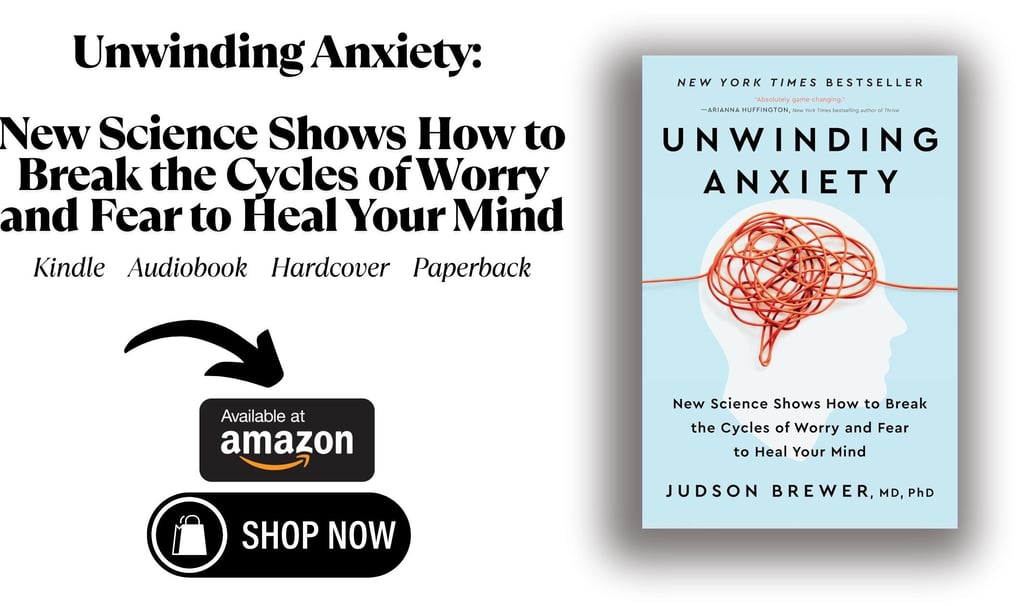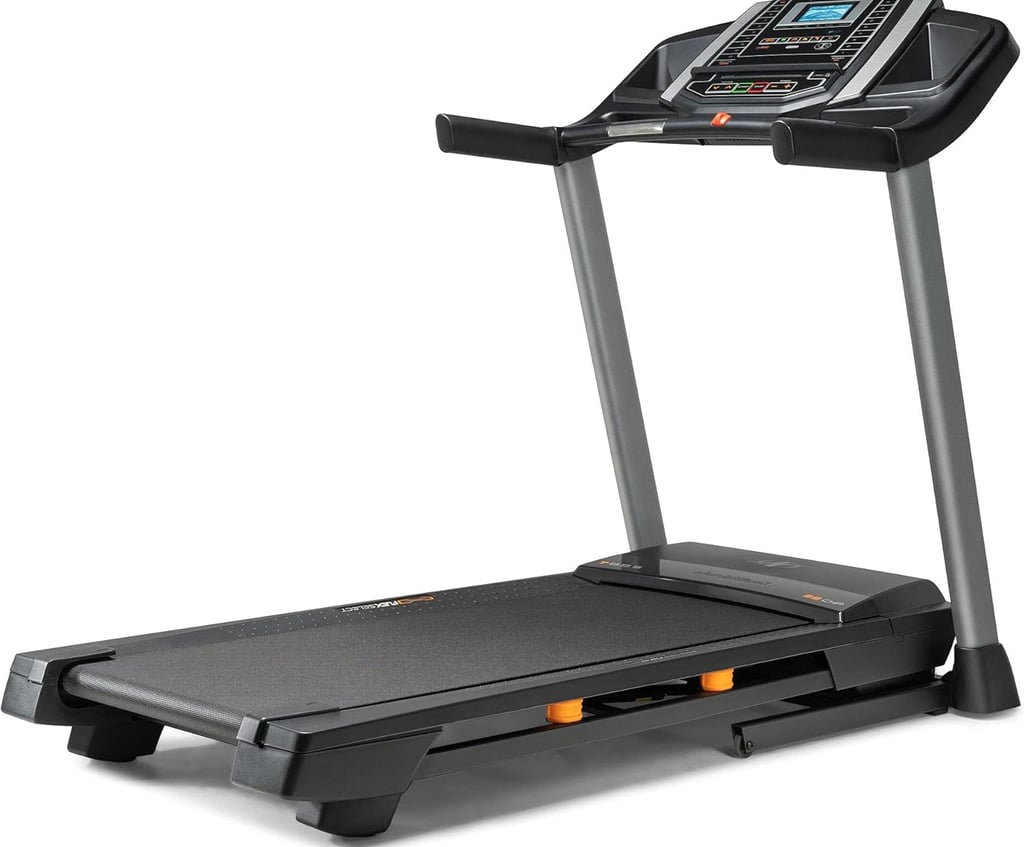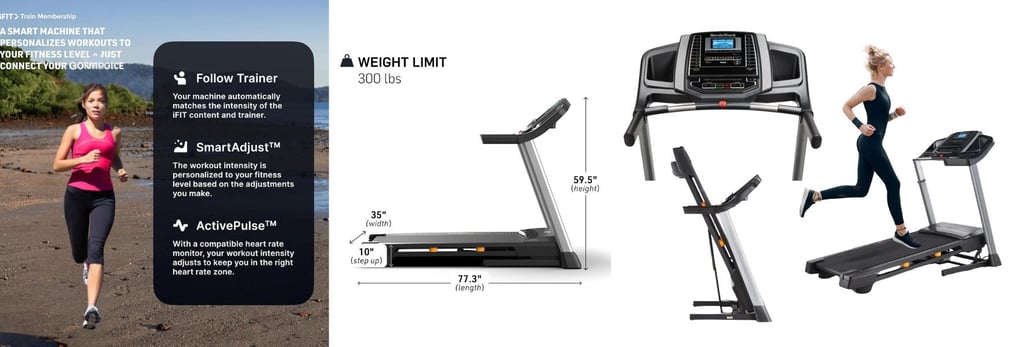Symptoms of an Anxiety Attack in Women and How to Handle Them with Care and Calm
Discover common symptoms of an anxiety attack in women and get easy tips for handling stress with care and calm at any age.
HEALTH & WELLNESS
Shari Smith
6/30/202517 min read
As an Amazon affiliate, we earn commissions at no extra cost to you if you click our links and make a purchase.
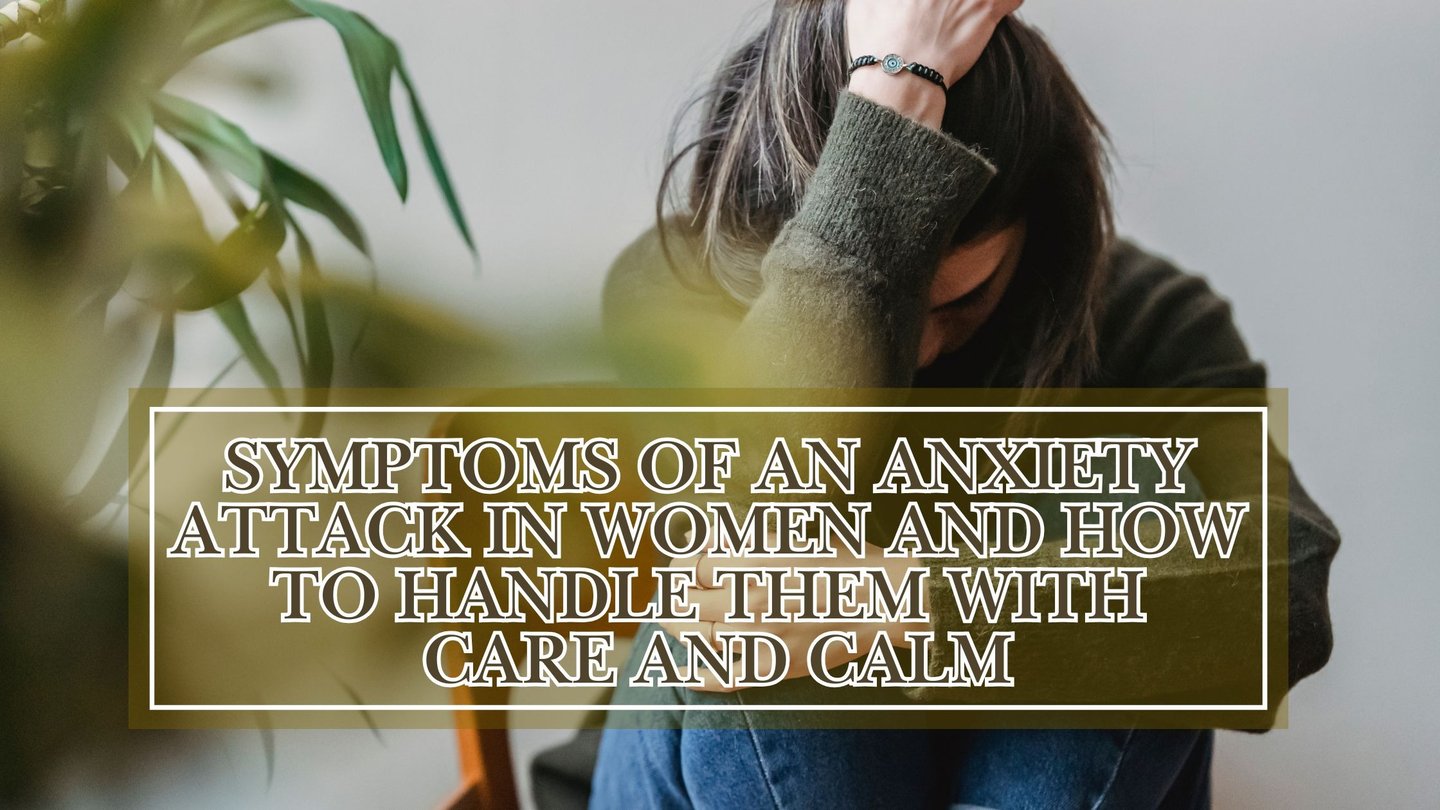

When anxiety strikes, it can feel like your body and mind are locked in a storm you never saw coming.
The symptoms of an anxiety attack can be overwhelming—tight chest, racing heart, shortness of breath, and a rush of fear that seems to take over everything.
For many women, these moments arrive in the quiet or the chaos, uninvited and all too real.
Recognizing the signs isn’t just helpful, it’s an act of self-kindness. Knowing what’s happening can be the first real step to feeling safe in your own skin again.
This post was made for you, with a focus on the gentle, real ways to spot an anxiety attack and ways to reclaim calm when the world feels too much.
Together, we’ll look at what helps, what heals, and how you can support yourself with patience and care.
What is an Anxiety Attack?
Anxiety attacks can sneak up like a sudden rainstorm on a day that started bright and easy.
You might be sitting quietly in your kitchen or moving through a busy day, and then, without warning, the symptoms of an anxiety attack sweep in.
The mind feels crowded. The body reacts. Even simple tasks feel impossible as your world narrows to a tunnel of distress.
For women, these attacks often carry both a deep sense of fear and a harsh wave of self-criticism that lingers long after the moment has passed.


Let’s take a closer look at what anxiety attacks are, how they show up in daily life, and gentle ways you can respond when they arrive.
Understanding the nature of anxiety attacks can help you reclaim your sense of safety—even when your thoughts feel loud and your heart is pounding.
Defining an Anxiety Attack
An anxiety attack is a strong rush of worry or fear that builds quickly and feels almost impossible to control.
Every part of you reacts—heart, mind, breath.
These episodes differ from general anxiety. They arrive suddenly, reaching a peak in minutes.
You know it’s happening when you:
Feel overwhelming dread or fear that doesn’t match your situation.
Notice your body tensing or shaking without explanation.
Struggle to breathe, like you can’t get enough air.
Experience racing thoughts that spiral out of your grasp.
The symptoms of an anxiety attack bring your attention to every beat of your heart, every shallow breath, every thought that says, “You’re not okay.” It feels real, urgent, close.
This is not a simple bad mood or a rough morning. It’s a storm that passes through your whole body and mind.
How Anxiety Attacks Happen
People often describe anxiety attacks as unpredictable, but they often have patterns.
They may show up during moments of stress, after a long period of holding things together, or even in a moment that seems safe.
The body and brain, tired from holding in so many worries, finally spill over.
Common triggers include:
A buildup of daily stress.
Past trauma or unresolved feelings.
Big changes—at home, work, or in relationships.
Caffeine or lack of sleep.
Health news or fears about what might go wrong.
For many women, these moments can also come from putting others first for too long, forgetting your own needs, or feeling unseen.
It’s not weakness. It’s your body’s way of asking for care and attention.

The Calm-Down Method
for Stopping Anxiety Attacks
Watch Video...
How to Handle an Anxiety Attack
It feels like the world is closing in, but you are not powerless. You can use simple steps to move through an anxiety attack with more kindness for yourself.
Here are gentle, effective ways to help yourself feel safe again:
1. Acknowledge What’s Happening
Remind yourself that these symptoms of an anxiety attack, while scary, are not dangerous. You’re not broken. You’re experiencing a common, real phenomenon.
Say to yourself, “This is an anxiety attack. It will pass.”
2. Focus on Your Breath
Breathe in through your nose for four seconds, hold for four, then breathe out for four. Repeat until you feel a little steadier.
If counting feels hard, just notice the rise and fall of your breath.
3. Ground Yourself in the Present
Touch something soft or cool—your sweater, a favorite stone, a smooth mug.
Look around and name five things you see, four things you can touch, three you can hear, two you can smell, one you can taste.
4. Show Yourself Compassion
Try a gentle affirmation: “I am safe right now.” “I am allowed to feel this way.” “I’m doing my best.”
Call or message a friend who understands, even if you just say you need a moment of support.
5. Move Your Body Slowly
Stretch your hands, roll your shoulders, walk a few steps.
Movement helps release tension trapped in your muscles.
Taking one small action breaks the cycle. Even just noticing your feet on the ground can bring back a sense of control.
The symptoms of an anxiety attack can’t erase your strength, your worth, or your story.
With each breath, you remind yourself of all the ways you can come home to yourself—again and again.
Common Symptoms of an Anxiety Attack in Women
Every woman who faces anxiety knows how it can sweep over the body and mind like a single gust, catching everything in its path.
The symptoms of an anxiety attack don’t always look the same for everyone, but there are familiar signs your body might send when things feel out of control.


Sometimes these signs are loud—your chest pounds, your hands shake. Other times, the signals are quieter but no less real.
Listening to your body’s messages, recognizing what’s happening, and accepting these feelings as a part of your experience makes it easier to care for yourself with patience and understanding.
While no list can capture every woman’s story, these are some of the most common symptoms that show up, woven into the daily moments that can be both routine and raw.
Let’s get clear on what these symptoms might look like, how they feel in the body and mind, and what might signal you need a little extra support.
Physical Symptoms
When an anxiety attack arrives, your body often rings the first alarm. These physical symptoms are your body’s way of saying “something feels wrong” even if you’re safe. Trusting your senses helps you tune into what’s real for you in that moment.
Some of the most common physical symptoms of an anxiety attack in women include:
Rapid heartbeat: It often feels like your heart is running a race you never signed up for.
Chest pain or tightness: An ache or pressure, sometimes mistaken for heart trouble, settles into your chest.
Shortness of breath: Breathing can feel shallow or sharp, as if the air is just out of reach.
Sweating: Hands turn clammy, sweat beads on your forehead, even if the room is cool.
Trembling or shaking: Subtle twitches or clear shakes, especially in your hands or legs.
Dizziness or lightheadedness: The room tilts or spins a little, leaving you unsteady.
Gastrointestinal distress: Queasy stomach, cramping, or the sudden urge to run to the bathroom.
You might notice one symptom or several at the same time. While these feelings can be intense and uncomfortable, they are the body’s natural reaction to stress and will not harm you.
Slow, steady breaths and gentle reminders to yourself—“I am safe”—can begin to soften what your body is holding. Give yourself the same grace you’d give a dear friend.
Emotional and Cognitive Symptoms
Physical signs are only one part of the story. An anxiety attack also storms through your emotions and thoughts.
Sometimes these feelings can feel even more overwhelming than the physical signs. You may find your mind filling with fears that feel too big to handle.
These moments can make you feel alone in a crowd or distant from yourself.
Most women describe these emotional and cognitive symptoms:
Feelings of dread: A heavy sense of something bad about to happen, even if there’s no clear reason why.
Fear of losing control: It can feel like you’re one step away from falling apart or not being able to “hold it together.”
Overwhelming worry: Thoughts loop and spin, growing heavier with each pass.
Trouble concentrating: Everyday tasks become hard, decisions take extra effort, and your mind slips away from the present.
Sense of detachment from reality: Sometimes everything seems foggy or far away, as if you’re watching life through a window.
It’s common to feel frustrated or ashamed about these responses, but try not to judge yourself.
These symptoms of an anxiety attack are not a reflection of your worth, your strength, or your ability to cope. They’re simply a signal, a flare letting you know you need gentleness and care.
Remind yourself that every thought and feeling is valid, no matter how temporary or intense it feels in this moment.
Duration and Intensity of Symptoms
Anxiety attacks can feel endless, but they rarely last more than 20 to 30 minutes. Most symptoms hit their peak within ten minutes and then gradually start to fade.
But in the middle of the storm, a single minute can feel like an hour.
The intensity may vary—sometimes it feels like a tidal wave, other times more like a choppy tide kept just below the surface.
Some women experience very strong physical and emotional symptoms all at once. Others may have a milder but persistent discomfort that builds slowly.
Pay attention to these signs that may need medical help:
Chest pain that feels crushing or spreads to your arm or jaw
Fainting or severe dizziness that makes it hard to stand
Shortness of breath that doesn’t get better when you calm your breath
If you ever feel unsure, especially with new or intense symptoms, it’s okay to reach out for support or seek medical attention. You deserve to feel safe and heard.
Remember, the symptoms of an anxiety attack are powerful, but they are not permanent. Each wave, no matter how fierce, does pass.
Your feelings are real, but they are not forever. Meeting these moments with kindness is an act of strength.
And with practice, you bring more light into even the darkest moments.
What Triggers an Anxiety Attack?
The symptoms of an anxiety attack can feel like a train arriving out of nowhere, sending shockwaves through both mind and body.
While the storm may appear sudden, there are often quiet sparks that light the fire before the flames take hold.


Knowing these triggers doesn’t mean you can prevent every attack, but it helps you offer yourself forgiveness and understanding instead of blame.
When you see patterns, you can move from feeling powerless to holding tools that help steady you, even in the whirlwind.
Stressful Life Events and Daily Pressures
Sometimes, stress builds up quietly, collecting over days, weeks, even years. Life changes, even the ones you choose, can tip that balance and bring on the symptoms of an anxiety attack. Job changes, moves, breakups, illness in the family—these all create pressure that lives in the body, waiting for a chance to spill out.
The everyday grind can be just as heavy as big life changes:
Work deadlines stacking up
Family needs that don’t let up
Relationship worries or feeling left out
Money pressure, bills, or debt
Parenting responsibilities that never pause
You may hold it all together until the smallest thing—a spilled cup, a ringing phone—breaks the dam. That’s not weakness.
It’s your body finally speaking what your mind has tried to carry in silence.
Unhealed Past Experiences
Old hurts can echo long after they’re over. Past trauma, whether recent or years old, can shape how you respond to stress now.
Sometimes, hearing a song, visiting a place, or even a scent brings up feelings you thought were gone. The body remembers, even when you want to forget.
Triggers from the past often show up as:
Flashbacks or sudden memories
Feeling unsafe in what should be a safe place
Dread when faced with situations that remind you of what hurt you
If the symptoms of an anxiety attack start after these moments, try to be gentle.
It’s only natural to hurt where you’ve already been wounded.
Physical and Environmental Triggers
Anxiety doesn’t always begin in the mind. Many physical things can push your body into attack mode, sometimes without warning.
Watch for these common physical triggers:
Too much caffeine or sugar
Lack of sleep, feeling run down or overtired
Hormonal changes, like before your period or during menopause
Skipping meals or eating poorly
Illness or pain
Environments can matter too. Crowded places, loud sounds, even bright lights can make your nervous system feel overloaded.
It helps to keep track of when anxiety attacks show up. Patterns can point you to triggers you might miss.
Internal Triggers and Persistent Thoughts
Sometimes, your own thoughts can spark the symptoms of an anxiety attack. Worries spin, doubts grow, and before long, the fear feeds itself.
This can look like:
Perfectionism or fear of failing
Expecting the worst or replaying mistakes
Self-criticism or not feeling “good enough”
Worrying about being judged or not liked
You push through—the meeting, the family dinner, the crowded train—carrying these silent fears. Over time, they grow heavy and loud.
Your mind feels like a crowded room with no way out.
Social Situations and Conflict
For many women, even simple social moments can feel loaded. The fear of saying the wrong thing, of being judged, or of being misunderstood can trigger anxiety attacks.
Here are a few examples that often set off symptoms:
Speaking in public or in groups
Going to a new place alone
Meeting new people
Arguments or tension with friends and family
Conflict can leave strong echoes. Hurtful words and unresolved tension can trigger symptoms, even long after the conversation ends.
Stressful Life Events and Daily Pressures
Sometimes, stress builds up quietly, collecting over days, weeks, even years. Life changes, even the ones you choose, can tip that balance and bring on the symptoms of an anxiety attack. Job changes, moves, breakups, illness in the family—these all create pressure that lives in the body, waiting for a chance to spill out.
The everyday grind can be just as heavy as big life changes:
Work deadlines stacking up
Family needs that don’t let up
Relationship worries or feeling left out
Money pressure, bills, or debt
Parenting responsibilities that never pause
You may hold it all together until the smallest thing—a spilled cup, a ringing phone—breaks the dam. That’s not weakness.
It’s your body finally speaking what your mind has tried to carry in silence.
How to Handle Anxiety Attack Triggers
Understanding your triggers lets you move from surprise to self-awareness.
The goal isn’t to remove every trigger, but to learn what you need in these moments. Trust the signals your body gives you.
When you spot a trigger:
Pause and breathe. Bring your focus to the present moment.
Remind yourself, “This feeling will not break me.”
Use a coping skill you trust—a calming breath, a grounding exercise, a soothing phrase.
Ask for support if you need it.
Writing down your experiences can help you spot patterns over time. Think of it as learning the rhythms of your own heart.
With practice, what once felt like chaos can start to make more sense.
You are not at fault for how you feel. Triggers do not define you. They’re simply signposts pointing to places that could use a little more compassion and care.
The symptoms of an anxiety attack are a call for kindness, not shame.
Each time you meet a trigger with gentleness, you give yourself the gift of understanding, and that light changes everything.


Immediate Techniques to Control Anxiety Attack Symptoms
When the symptoms of an anxiety attack hit, the world can shrink to the size of your fears.
In these moments, it might feel like the ground has slipped away.


But there are strategies that can soften the edges and help you find your way back to steady ground.
Using simple, body-based tools and gentle shifts in thinking, you can reclaim some control and breathe a little more freely.
These approaches aren’t cures, but they are acts of kindness you can offer yourself in the middle of the storm.
Breathing Exercises and Grounding Techniques
The symptoms of an anxiety attack often start with a racing heart and tight chest. Your body is in alert mode, ready for danger that’s not really there.
When that cycle starts, the simplest way to regain control is to change how you breathe and anchor yourself in the here and now.
1. 4-7-8 Breathing Technique
This slow breathing method helps reset your nervous system.
Here’s how you do it:
Breathe in through your nose for a count of 4.
Hold your breath gently for a count of 7.
Exhale slowly through your mouth for a count of 8.
Repeat this cycle for four rounds.
By lengthening your breath, you tell your body it’s safe. The longer exhale helps calm the “fight or flight” response.
If counting feels hard when symptoms of an anxiety attack flare up, just focus on extending your exhale for a few rounds, keeping it longer than your inhale.
With practice, most people notice their heartbeat slows and their body tension eases.
2. 5-4-3-2-1 Grounding Exercise
When fear takes over, your mind leaves the present. Grounding brings you back. This tool uses your senses to anchor you:
5 things you can see: Look around and notice the details—colors, shapes, patterns. Let your eyes settle on each object.
4 things you can touch: Notice texture—your clothes, a table, the floor. Feel their temperature, roughness, or softness.
3 things you can hear: Listen for sounds both near and far. Count out the hum of the fridge, a distant dog barking, birdsong outside.
2 things you can smell: Inhale deeply. This could be your shampoo, coffee, the air itself.
1 thing you can taste: Maybe candy, gum, or just the taste in your mouth.
List each one out loud or in your head. This routine pulls your focus into the real world and out of the spiral of fear.
It’s a simple act that makes it possible to feel even a little more at home in your body again.
These grounding moments are a way to tell yourself, “I’m here. I’m safe enough right now.”
Positive Self-talk and Mindfulness
The symptoms of an anxiety attack can grow louder when your inner critic joins in. Your mind may shout warnings that you can’t handle this, that you’re alone, that something terrible is about to happen.
These thoughts feed the spiral. Changing how you talk to yourself and using mindfulness can help turn down that noise.
1. Cognitive Shifts with Positive Self-talk
You might not be able to stop every anxious thought, but you can answer them with kindness. The voice in your head that says, “This will never end,” can be answered with:
“I’ve felt this before and I made it through.”
“This is hard, but it will pass.”
“I am safe right now, even if I don’t feel like it.”
Writing down loving statements or repeating them quietly can start to shift the power balance inside your mind.
You’re not fighting your anxiety—you’re holding your own hand.
2. Mindfulness in the Moment
Mindfulness isn’t about stopping your thoughts. It’s about noticing them, then letting them move past like clouds in the sky.
During an anxiety attack, this practice can help you separate yourself from your anxious thoughts so they have less control.
Try this gentle mindfulness approach:
Notice what you’re feeling—fear, panic, tightness.
Name it to yourself: “This is anxiety. My body is reacting.”
Bring your attention to your breath or to the feeling of your feet on the floor.
Let each thought, feeling, or body sensation show up, and then try to let it move along without judging it.
You may find that you can’t turn off the discomfort, but you can stop piling worries onto it. Mindfulness gives you a bit of space.
Even a small shift can help symptoms of an anxiety attack feel less overpowering.
Bringing together these physical and mental techniques is an act of self-support.
You are building a bridge from panic to peace, one breath and gentle thought at a time.
With practice, you begin to trust that, even in chaos, you have options and you are never alone in what you feel.
Long-Term Strategies to Reduce Anxiety Attacks
When the symptoms of an anxiety attack begin to feel like part of everyday life, hope can feel far away.
But real healing is possible.
It's not just about surviving the storm—it's about learning how to build shelter before the clouds gather.
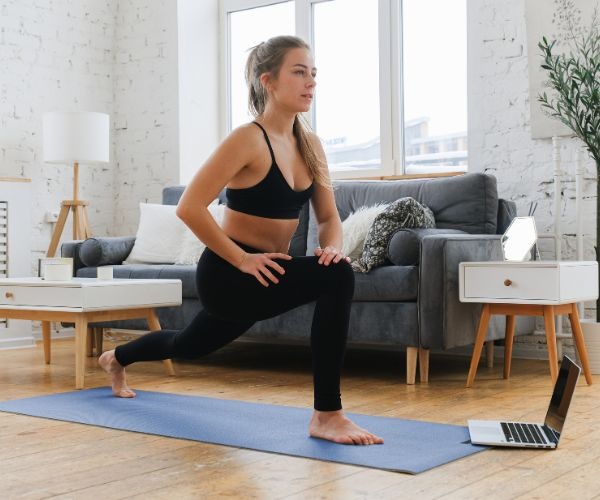

These are the long-term strategies that gently restore peace and help you reclaim your life, one step at a time.
Small changes, steady routines, and reaching for the support you deserve can all work together to keep anxiety from taking over your days.
Healthy Lifestyle Habits
Taking care of your body is an act of self-love. These habits form the foundation for fewer anxiety attacks and softer symptoms when they do arrive.
Here’s how you can help yourself, little by little:
Regular exercise: Movement softens the tightness that builds up with anxiety. Walking, dancing in your kitchen, or gentle yoga—anything that helps you feel your body and lets your mind shift gears. Aim for 20–30 minutes most days, but even ten minutes helps.
Balanced nutrition: What you eat can help steady your mood. Choose regular meals with whole grains, protein, healthy fats, and plenty of colorful fruits and vegetables. Skipping meals or loading up on sugar and caffeine can turn up your anxiety. Keep snacks on hand for days when your appetite fades, so you never feel too empty.
Sufficient sleep: Anxiety grows when you’re tired. Stick to a calming bedtime routine—a warm bath, reading, soft music. Try to wake up and go to bed at the same times each day. Even thirty extra minutes of sleep can make a difference. Less screen time before bed helps, too.
Stress management: Daily worries pile up without a break. Try simple ways to reset each day. Make a cup of tea, walk outside, call someone who makes you laugh, or journal your thoughts. Creative outlets like drawing or singing can ground your mind. Practicing slow breaths or short meditations each day helps teach your body it can relax, even when things feel noisy.
These habits don’t erase the symptoms of an anxiety attack, but they soften the ground you walk on. When your body feels cared for, your mind finds calm more easily.
Why the NordicTrack T Series Treadmill is a Game-Changer
When life gets busy or the weather doesn’t cooperate, having a treadmill at home like the NordicTrack T Series ensures you never miss your 45-minute walk.
This treadmill isn’t just about walking; it’s like having a personal walking coach in your living room.
Seeking Professional Help
Sometimes, kindness to yourself means reaching for support beyond your own hands. Anxiety can be stubborn, but you don’t have to manage it alone.
When to see a mental health professional:
If anxiety attacks are frequent, last a long time, or keep you from living your life, it’s time to ask for help. Feeling out of control, hopeless, or unable to work, care for your family, or enjoy your usual activities are clear signs that a professional could help.
Feeling out of control, hopeless, or unable to work, care for your family, or enjoy your usual activities are clear signs that a professional could help.
Available treatments:
There are proven options that ease the symptoms of an anxiety attack over time. Talk therapy, such as cognitive behavioral therapy (CBT), gives you tools to understand your anxious thoughts and change how you respond.
Some people find medication, prescribed by a doctor, lowers the daily buzz of anxiety and the intensity of attacks.
Support groups:
Sometimes, just knowing you’re not alone can lift a weight. Support groups, in person or online, offer a place to tell your story and hear others share theirs.
Listening to women who’ve walked this path reminds you that healing takes time but is never out of reach. Try local mental health organizations, faith communities, or reputable online spaces that focus on anxiety.
What to expect in your first appointment:
You might worry about feeling judged. But mental health professionals are trained to meet you with care, not criticism. The first visit will often mean sharing your symptoms and talking about your life.
From there, a plan forms, rooted in what you need and what feels safe to you.Asking for help is not weakness. It’s wisdom, and it’s brave.
No one expects you to fix this all on your own.
Reach out, even if your voice shakes. Bit by bit, you’ll find support that helps you breathe easier, even on the hard days.
Long-term healing is possible. Taking steady steps, even when you move slowly, will help the symptoms of an anxiety attack loosen their grip. You are worthy of that peace.
Conclusion
The symptoms of an anxiety attack can feel sharp and all-encompassing, but naming what’s happening can help you find steady ground. You do not have to carry these moments alone.
Small acts—like steady breathing, speaking kindly to yourself, reaching for gentle support, or just placing your hand on your heart—can soften the hardest minutes.
With time and the right steps, you can handle an anxiety attack in ways that bring back your sense of safety.
It takes bravery to choose care when anxiety is loud. Know that you’re not alone and that healing is real. If you’re ready, try one of the calming tools shared here or reach out for help.
Each breath, each act of kindness, is a step forward. Thank you for taking the time to care for yourself today. If these words helped or sparked new thoughts, share your story below or with someone you trust.
You are worth every gentle moment and every bit of calm you claim for yourself.

